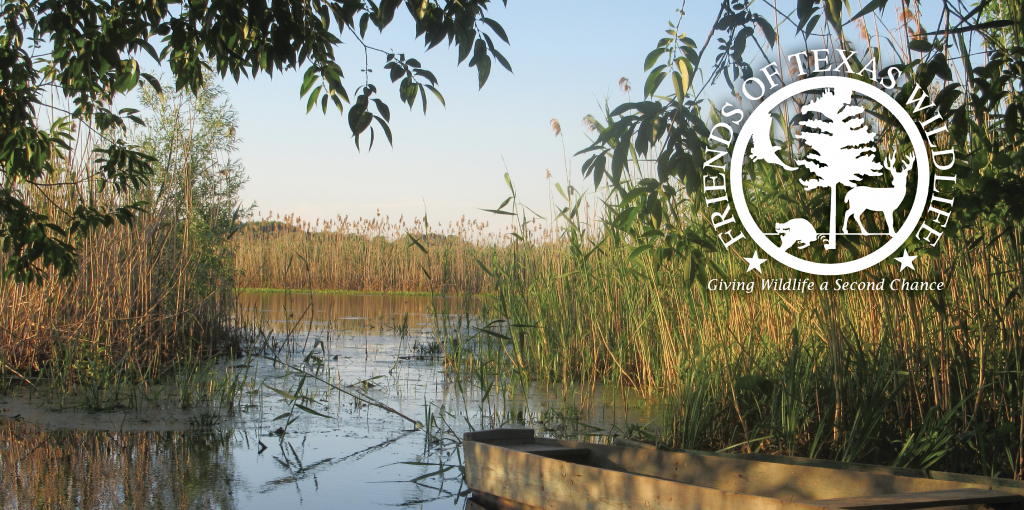Box Turtles
From time to time, we get a call at our wildlife center from someone finding a box turtle in their yard and wondering what they should do with it. Many wrongly assume these turtles are escaped pets, but our part of Texas is home to two different species of box turtles; the eastern box turtle (sometimes called the three-toed box turtle) and the ornate box turtle. The eastern-box turtle is found in roughly the eastern third of Texas, while the ornate box turtle is found throughout much of the state. Due to loss of habitat, they are not nearly as common as they once were, but they can still be found meandering around in wooded areas during the warmer months.
Box turtles are generally small in size, with adults ranging in length from 6-1/2 to 8 inches and being 4-1/2 to 6 inches wide. They usually weigh only one or two pounds. Although box turtles are mainly terrestrial and very similar in appearance to tortoises, they are in fact members of the genus Terrapene and are members of the American pond turtle family. Although they are members of the pond turtle family, they do not manage well if submerged in water; they are not good swimmers and could drown if the water is too deep. They do, however, enjoy shallow puddles and moist areas, and they enjoy a good soak, especially during hot weather. They are mainly diurnal (active during the day) and cold blooded. Box turtles can completely withdraw their head, tail, and limbs into their shell, and a “hinge” located on their lower shell (or plastron) enables them to seal up tightly.
Box turtles are omnivores. Their diet consists of plants, grasses, berries, fungi, slugs, worms, insects, salamanders, fish, frogs, and small eggs. Box turtles are not particularly territorial, and they can often be found congregating in small groups. They do not roam very far from their home territory. In fact, some studies have shown individual turtles still in the same area up to 50 years later. Male eastern box turtles usually have bright red- or orange-colored eyes while the eyes of the females are usually brown. Males of both species are often more brightly colored on their head and shell than females, and the male’s tail is generally longer and thicker. Male box turtles also have a slight depression in the middle of their lower shells while that of the females are flat. After mating, a female box turtle can store the sperm in her oviducts to produce fertilized eggs for up to four years; she generally will lay up to eight eggs once a year, burying them in the dirt to incubate. When the babies hatch, they are only about 1-1/4 inch in length. Due to their slow metabolisms, they will continue to grow until they are around 20 years old. They reach sexual maturity at 7 to 10 years of age. If part(s) of their shell becomes damaged, they can regenerate and heal the shell. In the wild, they can live from 40 to 50 years. Some have even been known to live as much as 100 years.
In many parts of the United States, box turtles are listed as vulnerable; Maine even lists them as endangered, and their numbers seem to be falling overall. This is due to habitat loss, removal from the wild for sale as pets, predation by domestic pets, and being hit by vehicles. To help protect box turtles, please never take them, or their hatchings or eggs, from the wild. If you should happen to find one in the road, please help the turtle by placing it in a safe location off the road, but in the same direction it was heading. Please never relocate box turtles to another location away from where they are found. They have such a strong homing instinct that unless they are kept in their home range they will stress and not adapt well to new surroundings. If they are in an unsafe location, please move them only a very short walking distance and then let them go on their way. Although tempting to try to keep them as pets, they do not thrive in captivity as they have very specialized care requirements, so do them a favor…enjoy watching them, but let them live wild.
To learn more about what we do and view pictures of many of the animals we assist, please visit our Facebook page at www.facebook.com/SavingTexasWildlife. Details and specifies-specific flowcharts regarding how to help found animals can be viewed on our website at www.ftwl.org (click on “Help and Advice”). These charts are extremely helpful to determine if an animal truly needs rescuing or not. If you need assistance with a wildlife animal you have found, please call us at 281-259-0039 or email us at ftwl.help@gmail.com. We offer many educational programs (including camps, birthday parties, educational presentations, and Second Saturdays). Our educational visitor’s center is open the second Saturday of each month from 10 a.m. to 2 p.m., located at 29816 Dobbin Hufsmith Road, Magnolia, Texas, so the next one will be Saturday, December 11 ($5 per person, kids 3 and under are free). If you might be interested in becoming a licensed wildlife rehabilitator, we will be hosting the International Wildlife Rehabilitation Council’s Basic Wildlife Rehabilitation class on January 22 and 23, 2022. The registration link should be posted soon at https://theiwrc.org/courses. This will be an in-person, two-day class held at our education center.
From all of us, and all our furry, feathered, and scaly critter friends, we wish you and yours a blessed holiday season and our best wishes for a healthy and happy 2022!
To learn more about what we do and view pictures of many of the animals we assist, please visit our Facebook page at
